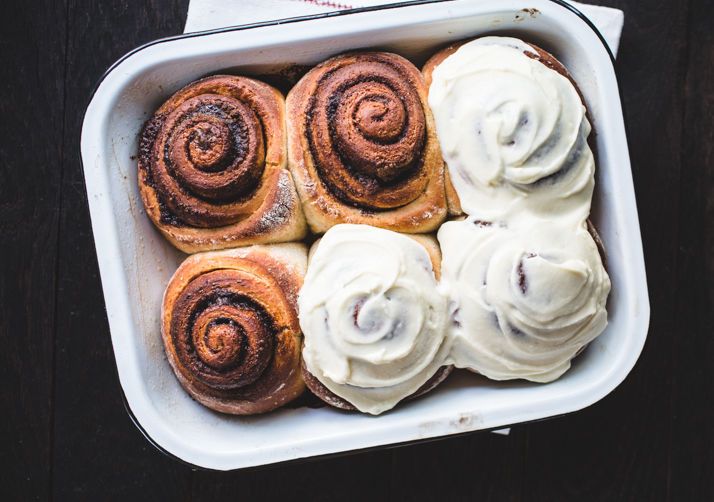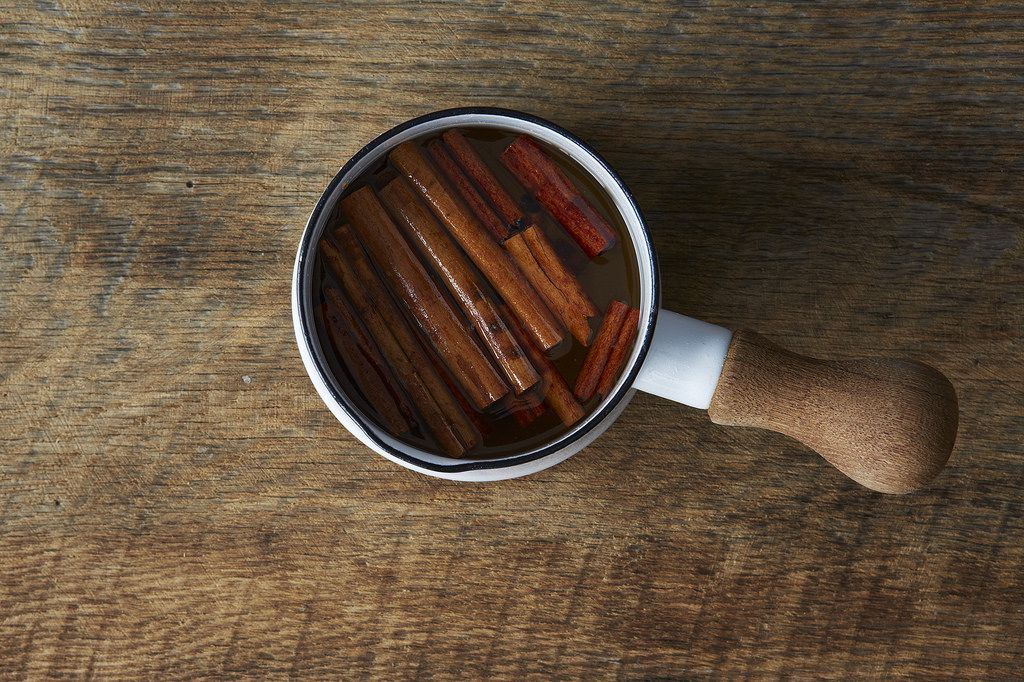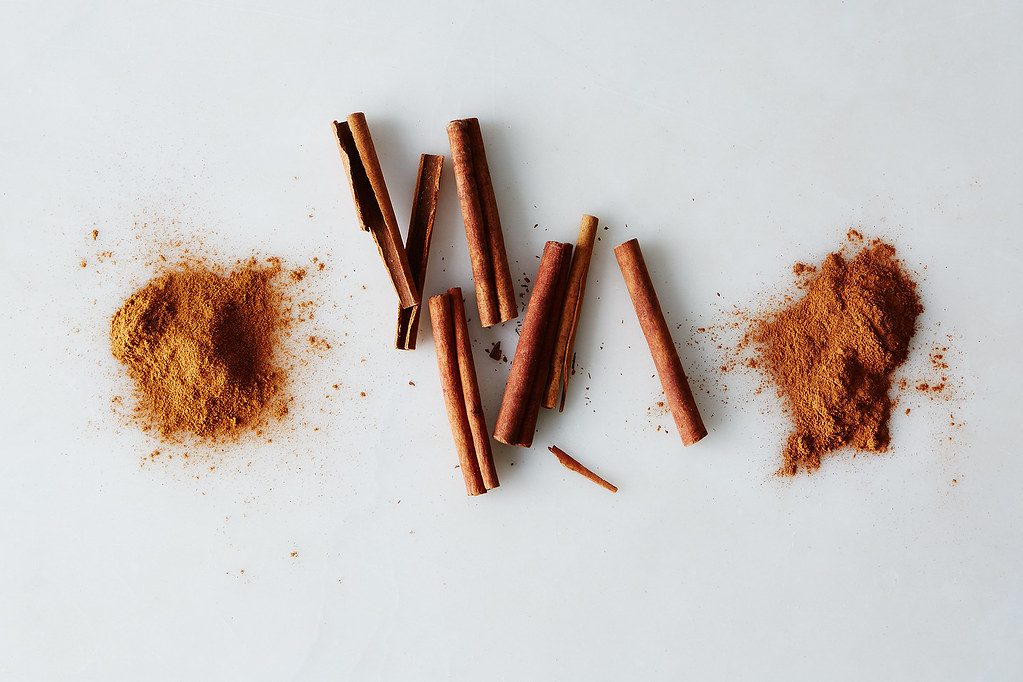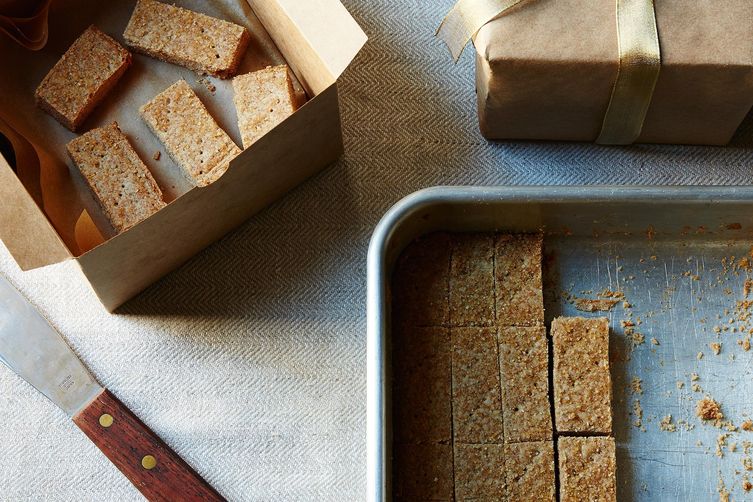Popular on Food52
Continue After Advertisement
40 Comments
lizaroze
August 9, 2021
I use cinnamon all time found retailer here https://www.eworldtrade.com/importers/cinnamon-buyer/ they give me in very cheap price with good quality
lizaroze
August 9, 2021
I use cinnamon all time found retailer here www.eworldtrade.com/importers/cinnamon-buyer/ they give me in very cheap price with good quality
Richard
April 6, 2017
I use cinnamon everyday. Cinnamon possesses extraordinary health benefits for diabetic patient and also for people who suffer from obesity and cholesterol problems.
True C.
November 3, 2017
If you use cinnamon regular, you should consider about Ceylon cinnamon. It is expensive. But, it is safe due to ultra low coumarin. Most studies suggest to use Ceylon cinnamon for regular users.
Saliya D.
September 10, 2016
organic single estate ceylon cinnamon is another step up for those looking for a premium cinnamon. fyi unless you really trust the company that you buy your cinnamon powder from and it is source certified from Sri Lanka I would not trust it. just buy good cinnamon sticks and powder yourself.
www.loveorganics.lk
www.loveorganics.lk
Linda G.
March 15, 2016
I ordered from this company and have never looked back...nothing like fresh grated in your coffee, in your dishes, desserts, anywhere you like! Completely different than the powder you find in the stores.
https://cinnamonhill.com
https://cinnamonhill.com
Jane
March 10, 2016
I use Cinnamon everyday! I love Chai Latte (an Indian Spice tea which consist of CINNAMON, nutmeg, cardamon, cloves, stair annise, Ginger, with your choice of milk + sweetener. Cinnamon is the soul of that drink!
I also use it in a lot of my baking, like Apple Crumble, Bread & Butter Pudding, Banana Bread, Carrot Cake etc. Cinnamon definitely enhances the treats' flavours!
I also use it in a lot of my baking, like Apple Crumble, Bread & Butter Pudding, Banana Bread, Carrot Cake etc. Cinnamon definitely enhances the treats' flavours!
barbara M.
March 9, 2016
One of my very favorites is Bastilla (Moroccan/North African) aka Basteeya Martha Stewart - an unusual and amazing marriage of chicken, spices and phyllo, sugar, and cinnamon package - love it!
Cookin' J.
March 9, 2016
There is a lot of confusion about cinnamon so let's start at the top and work down. All "cinnamon" trees are of the Order Laurales and the Family Lauraceme. Simply put, they are part of the laurel tree family of trees. There are over 50 Genera and 3500 Species in that family which is what leads to much of the confusion. The family includes Genus Laurus which is the source of Bay Leaves whether grown in Turkey, the Mediterranean, or California (I prefer Turkish though the most common and least expensive are from California). Another part of the family is Persea (avocados) and then there is Sassafras, one of the few deciduous trees in the family. As we narrow the focus we come to the Genus Cinnamomum which has some 300 members or Species. One of the Species is Camphora from which camphor oil is extracted. The key is that all of the Cinnamomum Genera are known for their highly fragrant oils.
Cinnamon, the spice (big picture), is the inner bark harvested from some of the Species in this Genus of trees. And now the real confusion begins so let's take it bit by bit.
Some say there is a true cinnamon and then there is everything else. From my research into the subject this is how I believe the confusion began.
If one were to collect a single stick of cinnamon from each of the four types and visually compare them side by side one would notice that three have a thick bark and one has paper-thin layers in its bark (it also crumbles quite easily).
The thin-layered one is Cinnamomum Verum (or c. verum, A.K.A. c. zeylanicum and Ceylon Cinnamon). Maybe because it is unique in its layering it became known as "true" cinnamon.
Regardless, the confusion came about because then all of the "thick" bark cinnamons were grouped together by early spice traders and called Cassia Cinnamon. Even Wikipedia makes this grouping mistake. This is what leads to the incorrect conclusion that more cassia is imported to the US than any other cinnamon.
In the "thick" bark group of cinnamons there are three primary species in use: c. cassia (China or Chinese Cinnamon), c. loureiroi (Vietnamese Cinnamon), and c. burmannii (Indonesian or Korintje Cinnamon). 50% of the world's production of cinnamon (all types) is Indonesian. 33% is Ceylon and that leaves a paltry 17% to be split between Chinese and Vietnamese. By far, Chinese and Vietnamese cinnamon are the most expensive.
Indonesian or a blend of Indonesian (generally with Ceylon and Chinese) are the typical store-shelf cinnamons in the US.
Thank you spice traders for confusing the heck out of us for all these years!
Cinnamon, the spice (big picture), is the inner bark harvested from some of the Species in this Genus of trees. And now the real confusion begins so let's take it bit by bit.
Some say there is a true cinnamon and then there is everything else. From my research into the subject this is how I believe the confusion began.
If one were to collect a single stick of cinnamon from each of the four types and visually compare them side by side one would notice that three have a thick bark and one has paper-thin layers in its bark (it also crumbles quite easily).
The thin-layered one is Cinnamomum Verum (or c. verum, A.K.A. c. zeylanicum and Ceylon Cinnamon). Maybe because it is unique in its layering it became known as "true" cinnamon.
Regardless, the confusion came about because then all of the "thick" bark cinnamons were grouped together by early spice traders and called Cassia Cinnamon. Even Wikipedia makes this grouping mistake. This is what leads to the incorrect conclusion that more cassia is imported to the US than any other cinnamon.
In the "thick" bark group of cinnamons there are three primary species in use: c. cassia (China or Chinese Cinnamon), c. loureiroi (Vietnamese Cinnamon), and c. burmannii (Indonesian or Korintje Cinnamon). 50% of the world's production of cinnamon (all types) is Indonesian. 33% is Ceylon and that leaves a paltry 17% to be split between Chinese and Vietnamese. By far, Chinese and Vietnamese cinnamon are the most expensive.
Indonesian or a blend of Indonesian (generally with Ceylon and Chinese) are the typical store-shelf cinnamons in the US.
Thank you spice traders for confusing the heck out of us for all these years!
Sandy P.
November 15, 2018
Don't suppose you could go the rest of the way and tell us about the flavors of these four, and what they are best for?
Cookin' J.
November 15, 2018
Ceylon cinnamon is the "standard" in the UK, Mexico, and South America so I use it in recipes that originate in those areas. It has a slight floral nose and a mild citrusy aftertaste. Korintje most closely approximates the supermarket cinnamon my mom bought long, long ago in the red can. It has a warm nose and a smooth flavor that works well in custards, bread pudding, and stovetop cooking (an 1/8 tsp works wonders in a large pot of tomato-based sauces, Tex-Mex chili, and other hearty dishes). I also use it in meat rubs, marinades, and BBQ sauce. Chinese and Vietnamese contain eugenol, the essential oil that gives them their "bite." Think Red Hots. I use both in baking. Vietnamese tends to be sweeter so I use it in sweet-forward recipes (like cinnamon rolls) and I use Chinese when sugar-like sweetness isn't an issue (like apple pie).
In all cases quality matters. If you buy cheap cinnamon expect all of them to taste nearly the same. Spend a bit more, store them away from sunlight and heat, and people will notice the difference each makes in your recipes.
In all cases quality matters. If you buy cheap cinnamon expect all of them to taste nearly the same. Spend a bit more, store them away from sunlight and heat, and people will notice the difference each makes in your recipes.
Kali
March 9, 2016
A friend who is a Greek food aficionado (and somm) made pastitsio, a much richer version of lasagna. It was out of this world. I like cinnamon in a lot of tomato-based dishes. Not so much that it's very forward, but enough to add contrast and emphasis to the fresh acidic taste of tomato.
A little bit in chicken tagine is wonderful. Certain kinds of pickles (watermelon rind, bread and butter, red onion quick pickles).
Homemade stocks. Hot chocolate or frothed with milk for espresso or coffee. Roasted squash (especially if it's kept savory with smoked paprika, etc).
A little bit in chicken tagine is wonderful. Certain kinds of pickles (watermelon rind, bread and butter, red onion quick pickles).
Homemade stocks. Hot chocolate or frothed with milk for espresso or coffee. Roasted squash (especially if it's kept savory with smoked paprika, etc).
Susan G.
March 9, 2016
I buy Penzey's Cinnamon Chunks and put about 1/8 tsp into my coffee grinder with the beans every morning.
Lisa
March 9, 2016
I use a good bit of cinnamon at my house. I think the key thing is its freshness. You might consider grinding your cinnamon stick in a mortar. Little electric coffee mills are notorious for leaving chunky bits. Or you could start it off in the mill & finish it up in the mortar.
Patricia
March 9, 2016
After doing some research for the health benefits of cinnamon for diabetics I found that the cinnamon most commonly marketed in the USA, which is the Cassia type, can be toxic to our liver. I threw all I had in the trash and opted for the safer variety, which is the Ceylon. The Cassia or Vietnamese cinnamon can be especially toxic to children according to some of the articles I found online. I found the same information on several different websites. The general statement on Cassia was this: cassia can contain high levels of coumarin, a naturally occurring ingredient that, when eaten in large enough amounts, can cause liver toxicity in a small group of individuals sensitive to it. One source I read was from an article by a Dr. Fuhrman who wrote: Recent studies have revealed that regularly consuming Cassia cinnamon powder could be problematic, resulting in potentially harmful levels of coumarin intake. For example, one study estimated that small children eating oatmeal sprinkled with cinnamon a few times a week would exceed the established safe upper limit of exposure. Similarly, they concluded that adults who are heavy consumers of culinary cinnamon or take powdered cinnamon supplements could also reach potentially unsafe doses. You might want to check it out if you are cooking with a lot of cinnamon.
Cookin' J.
March 9, 2016
Patricia
There appears to be consensus among the European health agencies that says 0.1 mg/kg of body weight does not exceed tolerable intake levels of courmarin. A person weighing 130 pounds would have to consume in excess of 1tsp of c. cassia per day to exceed European TDI levels of coumarin. These studies assume 100% of what you are eating will be metabolized--bad assumption. BTW, the EU says a lethal dose of coumarin is 275mg/kg of body weight. A 130 pound person would have to consume 8 pounds of c. cassia in one day to reach that level of toxicity. If you are all that worried about coumarin you need to give up eating strawberries, cherries, and apricots (among others) as they too contain coumarin.
There appears to be consensus among the European health agencies that says 0.1 mg/kg of body weight does not exceed tolerable intake levels of courmarin. A person weighing 130 pounds would have to consume in excess of 1tsp of c. cassia per day to exceed European TDI levels of coumarin. These studies assume 100% of what you are eating will be metabolized--bad assumption. BTW, the EU says a lethal dose of coumarin is 275mg/kg of body weight. A 130 pound person would have to consume 8 pounds of c. cassia in one day to reach that level of toxicity. If you are all that worried about coumarin you need to give up eating strawberries, cherries, and apricots (among others) as they too contain coumarin.
Steve T.
October 25, 2019
You need to revisit your course work in measurement conversions if you are still well enough. It isn't 8 pounds that is a problem. It is 1 teaspoon for adults and much less for kids. An average teaspoon of cinnamon weighs about 2.6 g, which means that each teaspoon of a non-Ceylon cinnamon contains 6.9-18 mg of coumarin. At these levels, a single teaspoon per day could put many average sized adults at risk of liver damage. This is especially true for individuals who already have pre-existing liver disease.
Cookin' J.
October 25, 2019
Steve
I'm 76, I've consumed all types of cinnamon all my life, and in very good health (including my liver), thank you.
If you go back to the German study (where you got your numbers) you will find it says a typical adult of 60 kg (132 lbs) can safely consume 2 g of cassia per day every day for as long as they live. It also says that spikes in daily intake of multiple times the daily recommended limits do not do harm as long as the spike periods do not last longer than two weeks.
For children, they recommend a limit of 0.5 g/day for a child of 15 kg (33 lbs) with the same spike caveat.
Now, one large Cinnabon cinnamon roll recipe (12 rolls) calls for 3 tbsp. (9 tsp) of cinnamon. If one were to use cassia then each roll would contain 3/4 of a tsp or 2 g of cinnamon--well within the adult limit unless one eats multiple rolls daily for weeks on end.
Steve, there aren't many recipes that use more cinnamon per serving than cinnamon rolls and they are safe by your standards. So, bury your head in the sand if you wish or you can join the rest of us when we enjoy culinary delights.
I'm 76, I've consumed all types of cinnamon all my life, and in very good health (including my liver), thank you.
If you go back to the German study (where you got your numbers) you will find it says a typical adult of 60 kg (132 lbs) can safely consume 2 g of cassia per day every day for as long as they live. It also says that spikes in daily intake of multiple times the daily recommended limits do not do harm as long as the spike periods do not last longer than two weeks.
For children, they recommend a limit of 0.5 g/day for a child of 15 kg (33 lbs) with the same spike caveat.
Now, one large Cinnabon cinnamon roll recipe (12 rolls) calls for 3 tbsp. (9 tsp) of cinnamon. If one were to use cassia then each roll would contain 3/4 of a tsp or 2 g of cinnamon--well within the adult limit unless one eats multiple rolls daily for weeks on end.
Steve, there aren't many recipes that use more cinnamon per serving than cinnamon rolls and they are safe by your standards. So, bury your head in the sand if you wish or you can join the rest of us when we enjoy culinary delights.
Steve T.
October 26, 2019
You need to reread my comment. I was commenting on the fallacy of the previous comment and their kack of conversion skill. The reports DO NOT say this >>> A 130 pound person would have to consume 8 pounds of c. cassia in one day to reach that level of toxicity. <<<
No one cares about you and your cinnamon rolls. The problem is people taking several teaspoons or tablespoons a day over an extended period as a supplement.
No one cares about you and your cinnamon rolls. The problem is people taking several teaspoons or tablespoons a day over an extended period as a supplement.
Cookin' J.
October 26, 2019
Steve
I'm so sorry that your animus is getting in the way of objectivity.
It seems we are both citing European studies, specifically one done by the German Federal Institute for Risk Assessment. In that study they state the tolerable daily intake (TDI) level of coumarin for a human is 0.1 mg/kg of body weight.
They further say that 1 kg of cassia contains somewhere between 2.1 g and 4.4 g of coumarin, and 1 kg of powdered cassia is 362.29 tsp. So, 4.4 g x 1000 = 4400 mg / 362.29 tsp = 12.14 mg of coumarin/tsp of cassia (for cassia having the strongest concentration of coumarin; less than half that for the weakest).
The TDI of coumarin for a 60 kg (132 lb) adult is 6 mg per day (60 kg x 0.1 mg/day)--somewhere between 1/2 tsp and 1 tsp per day of cassia, depending upon the coumarin concentration in the cassia.
With a caveat I will concede your point that multiple teaspoons of cassia taken as a supplement over a long period of time may be a health risk and a better alternative might be Ceylon cinnamon. My caveat is two fold:
The weight and health of the individual along with the concentration of coumarin in the supplement. And, the assumption that Ceylon cinnamon has the same health benefits as Cassia cinnamon.
NOW, to my original statement to which you took umbrage. The LD50 (Median Lethal Dose) of coumarin to a human is 293 mg/kg of body weight (from that same German study). So, a 60 kg (132 lb) person would have to consume 17,580 mg (17.58 g) of coumarin to receive a lethal dose.
At 4.4 g of coumarin per kg of cassia, the 132 lb person would have to consume 3.995 kg of cassia to receive a lethal dose of coumarin. 3.995 kg x 2.2 lb/kg = 8.78 lbs which I rounded down to the 8 pounds you questioned. Thank you very much.
One final thought before I end my participation in this thread. Coumarin is the primary ingredient in the blood thinners coumadin and warfarin, and it also naturally occurs in celery, strawberries, and apricots.
Best wishes to all during the fall baking season and you better believe I will go through many, many teaspoons of all kinds of cinnamon in producing my baked goods between now and New Year's Eve.
I'm so sorry that your animus is getting in the way of objectivity.
It seems we are both citing European studies, specifically one done by the German Federal Institute for Risk Assessment. In that study they state the tolerable daily intake (TDI) level of coumarin for a human is 0.1 mg/kg of body weight.
They further say that 1 kg of cassia contains somewhere between 2.1 g and 4.4 g of coumarin, and 1 kg of powdered cassia is 362.29 tsp. So, 4.4 g x 1000 = 4400 mg / 362.29 tsp = 12.14 mg of coumarin/tsp of cassia (for cassia having the strongest concentration of coumarin; less than half that for the weakest).
The TDI of coumarin for a 60 kg (132 lb) adult is 6 mg per day (60 kg x 0.1 mg/day)--somewhere between 1/2 tsp and 1 tsp per day of cassia, depending upon the coumarin concentration in the cassia.
With a caveat I will concede your point that multiple teaspoons of cassia taken as a supplement over a long period of time may be a health risk and a better alternative might be Ceylon cinnamon. My caveat is two fold:
The weight and health of the individual along with the concentration of coumarin in the supplement. And, the assumption that Ceylon cinnamon has the same health benefits as Cassia cinnamon.
NOW, to my original statement to which you took umbrage. The LD50 (Median Lethal Dose) of coumarin to a human is 293 mg/kg of body weight (from that same German study). So, a 60 kg (132 lb) person would have to consume 17,580 mg (17.58 g) of coumarin to receive a lethal dose.
At 4.4 g of coumarin per kg of cassia, the 132 lb person would have to consume 3.995 kg of cassia to receive a lethal dose of coumarin. 3.995 kg x 2.2 lb/kg = 8.78 lbs which I rounded down to the 8 pounds you questioned. Thank you very much.
One final thought before I end my participation in this thread. Coumarin is the primary ingredient in the blood thinners coumadin and warfarin, and it also naturally occurs in celery, strawberries, and apricots.
Best wishes to all during the fall baking season and you better believe I will go through many, many teaspoons of all kinds of cinnamon in producing my baked goods between now and New Year's Eve.
Steve T.
October 28, 2019
I have no animus or ill will toward anyone. Again you cite something unrelated to my comment which is that the stidies do not say that you have to consume 8 lbs of cinnamon a day for toxicity.. which was the original comment that i responded to.
Everything else is your self absorption. Get over it and have a cup of cinnamon tea
Everything else is your self absorption. Get over it and have a cup of cinnamon tea
Kpath
March 9, 2016
We use stick cinnamon (Ceylon) in home made applesauce and veal stew. Cassia on my bagel every morning. I get all of our spices from Penzeys.com and avoid supermarket spices as much as possible.
Elida M.
March 9, 2016
I use a stick of cinnamon when making "arroz con leche" (rice pudding). You can also use powder cinnamon in meat balls, to give them a Turkish touch !
Bunni J.
March 9, 2016
I am the world's biggest cinnamon fanatic!! I put it in everything you can possibly imagine, including a cinnamon rubbed baked chicken and sprinkled over sautéed Brussel sprouts with a dash of lime. I could go on and on. I use it daily on my coffee and we're not talking a dash of cinnamon here- easily a half teaspoon! I love it!
It's health benefits are amazing and it helps with inflammation and type 2 diabetes. Vietnamese is by far my favorite though I have tried all four types described previously but use the sticks for mulled cider and tea, hot almond milk, etc. I tried Ceylon cinnamon for its stated health benefits, but the price is ridiculous. Vietnamese has more flavor and helps the joints just as well.
Finally, I buy my spices exclusively from World Spice Mercants in Seattle. They deliver through the mail and I have had some great comments from my postal carriers and co-workers who wanted to know exactly what made my mail smell so good. The mailman even said his mail truck smelled heavenly for a week!! Though I am now a vegetarian, the rest of my family still enjoys meat so If anyone has unusual ideas for cinnamon, please share!
It's health benefits are amazing and it helps with inflammation and type 2 diabetes. Vietnamese is by far my favorite though I have tried all four types described previously but use the sticks for mulled cider and tea, hot almond milk, etc. I tried Ceylon cinnamon for its stated health benefits, but the price is ridiculous. Vietnamese has more flavor and helps the joints just as well.
Finally, I buy my spices exclusively from World Spice Mercants in Seattle. They deliver through the mail and I have had some great comments from my postal carriers and co-workers who wanted to know exactly what made my mail smell so good. The mailman even said his mail truck smelled heavenly for a week!! Though I am now a vegetarian, the rest of my family still enjoys meat so If anyone has unusual ideas for cinnamon, please share!
Cookin' J.
February 12, 2016
Catherine there is a ton of misinformation floating around on cinnamon. About 1/3 of the world's production is Ceylon (c. verum) and most of it goes to Mexico, Central and South America, and our friendly Brits. With its milder flavor (lower essential oils) its complex flavor profile really shines through and it has a slight citrus note in its aftertaste. Because it is mild, it is not the favorite in the US.
Roughly half of the world's production is Indonesian (c. burmannii), also known as Korintje. This is by far the most common and least expensive cinnamon available. Because it contains no eugenol, the essential oil that gives cinnamon its "bite," it is usually blended with a small amount of Chinese (c. cassia) cinnamon and, in some brands, a little Ceylon cinnamon. By far this blend is the most common cinnamon on American store shelves.
Approximately 1/6th of the world's production is split between Chinese (c. cassia) and Vietnamese (c. loureiroi) with most of it being cassia. Both have a strong "bite," the flavor and heat found in red hots, but the Vietnamese tends to have a slightly sweeter flavor profile.
I use and love all four. I use Ceylon in custards and other baked goods where I want a mild complex flavor that will compliment other flavorings/tastes. Korintje is my favorite in coffee and other hot drinks (and for stovetop cooking) where I want a more assertive flavor but no bite. Chinese is my go to cinnamon when it is blended with other spices for baking (apple pie, pumpkin pie, etc.). I reserve Vietnamese, the most expensive, for cinnamon bread and cinnamon rolls where I want a super strong cinnamon flavor.
Yes, I love cinnamon!
BTW, Ceylon cinnamon (c. verum) in stick form (quills) looks like a bunch of layers of light brown paper and it crumbles very easily. The quills of all the other types of cinnamon are a single thick layer that is nearly impossible to crumble by hand.
I have no problem storing any of the cinnamons for a year or more in tightly sealed glass jars. But then, I store them in a dark cabinet away from all heat sources. Friends who store their spices (and dried herbs) in racks hanging on a wall or in shelves near their cooktop/oven don't have the same experience.
Roughly half of the world's production is Indonesian (c. burmannii), also known as Korintje. This is by far the most common and least expensive cinnamon available. Because it contains no eugenol, the essential oil that gives cinnamon its "bite," it is usually blended with a small amount of Chinese (c. cassia) cinnamon and, in some brands, a little Ceylon cinnamon. By far this blend is the most common cinnamon on American store shelves.
Approximately 1/6th of the world's production is split between Chinese (c. cassia) and Vietnamese (c. loureiroi) with most of it being cassia. Both have a strong "bite," the flavor and heat found in red hots, but the Vietnamese tends to have a slightly sweeter flavor profile.
I use and love all four. I use Ceylon in custards and other baked goods where I want a mild complex flavor that will compliment other flavorings/tastes. Korintje is my favorite in coffee and other hot drinks (and for stovetop cooking) where I want a more assertive flavor but no bite. Chinese is my go to cinnamon when it is blended with other spices for baking (apple pie, pumpkin pie, etc.). I reserve Vietnamese, the most expensive, for cinnamon bread and cinnamon rolls where I want a super strong cinnamon flavor.
Yes, I love cinnamon!
BTW, Ceylon cinnamon (c. verum) in stick form (quills) looks like a bunch of layers of light brown paper and it crumbles very easily. The quills of all the other types of cinnamon are a single thick layer that is nearly impossible to crumble by hand.
I have no problem storing any of the cinnamons for a year or more in tightly sealed glass jars. But then, I store them in a dark cabinet away from all heat sources. Friends who store their spices (and dried herbs) in racks hanging on a wall or in shelves near their cooktop/oven don't have the same experience.
meg
March 9, 2016
I have read that the sticks that are coiled like a snail are cassia and the ones that curl both sides to the middle are the more expensive or desired varieties.
I'm sorry that I don't recall the exact ones named. Maybe John should have been writing the article since the author admits not really liking cinnamon.
I'm sorry that I don't recall the exact ones named. Maybe John should have been writing the article since the author admits not really liking cinnamon.
Greenstuff
January 20, 2016
Some years ago, I brought a lot of cinnamon home from Madagascar. It didn't come in finely coiled sticks, but rather in pieces that could clearly be recognized as bark. I really liked grinding it up an using it--what your tasters described as gritty, I found to be an inviting texture, like adding nuts or cacao nibs.





See what other Food52 readers are saying.